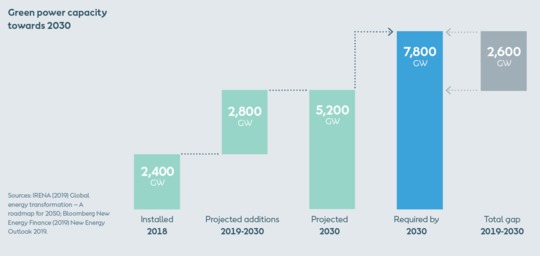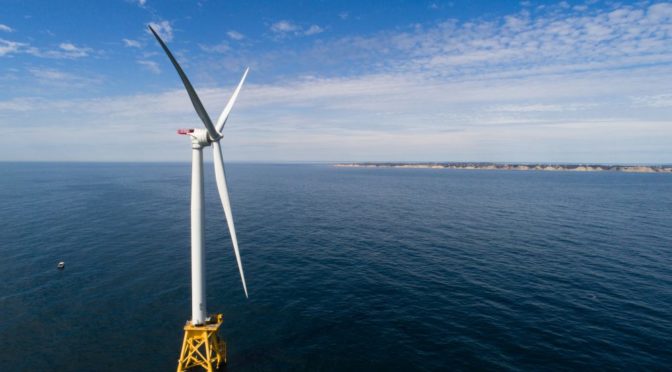Replacing fossil fuels with green energy is the main lever to combat climate change, says energy company Ørsted in a new white paper. The power sector is key to decarbonising energy, and the green technologies needed to speed up climate action and keep global warming below 1.5ºC are already here.
Almost 75% of global emissions come from the use of energy, mainly due to the burning of fossil fuels for power, heat, cooling, transportation, and industrial processes. Therefore, the most important lever to reduce emissions as fast as required is to speed up the transformation from fossil-based energy production to green energy.
“2020 must become the year when world leaders finally take the necessary action to reduce global carbon emissions in line with what science says is necessary to stop climate change at 1.5ºC. We have the solutions to do it,” says Henrik Poulsen, CEO of Ørsted, the global leader in offshore wind.
He adds: “To halve emissions by 2030 and stay within 1.5ºC of global warming, the world must accelerate the deployment of green energy and the retirement of coal-fired power plants. At the same time, the world must intensify green electrification of transport, buildings and industry and keep the global energy consumption in check by boosting energy efficiency.”
Ørsted releases the new white paper ahead of the UN Climate Change Conference that begins in Madrid on 2 December. The conference marks the start of a year that will be decisive for solving the climate crisis. During the next year towards the 2020 UN Climate Conference in Glasgow, countries will announce their plans for how to reduce emissions. In Glasgow, world leaders will meet to review the announced commitments in light of what is required by science to limit global warming to 2ºC and preferably 1.5ºC as agreed in the Paris Agreement in 2015.
The green breakthrough
Speeding
up climate action is also the rational choice from an economic point of
view, according to the new white paper. Today, green power from solar
and wind energy is already cheaper than new-built coal, gas and nuclear
plants, which is a breakthrough for the green transformation.
“The solutions we need to transform the world’s energy system are at our disposal. Transforming from fossil fuels to green energy is no longer a question of technical feasibility or that renewable energy is too expensive compared to fossil fuels. It’s about having the ambition and will to make the necessary decisions sooner rather than later,” says Henrik Poulsen.
A joint effort
Policymakers, businesses and investors must work together to reduce emissions fast enough, says Henrik Poulsen:
“When governments set ambitious targets and enact clear policies, the private sector can and will further accelerate the build-out of green energy. And this is urgently needed to speed up the retirement of old coal-fired power plants and to put an end to the construction of new coal-fired capacity.”
According to the UN Climate Panel, more than 1.5°C of global warming could lead to irreversible tipping points in nature and trigger runaway climate change. The world has already warmed with 1°C, and to stay within 1.5ºC of global warming, the world now needs to reduce the projected global carbon emissions by 50% towards 2030. But global emissions are rising and the world is not on track to keep global warming within 1.5ºC as agreed in Paris in 2015.
Read the full white paper from Ørsted here: ‘Taking action to stay within 1.5°C‘.

The world will need to double the planned build-out of green power to meet the 1.5°C scenario. Visual from the white paper.
Attached filesØrsted white paper.png
Green power capacity towards 2030.png
About Ørsted
The
Ørsted vision is a world that runs entirely on green energy. Ørsted
develops, constructs and operates offshore and onshore wind farms, solar
farms and energy storage facilities, bioenergy plants and provides
energy products to its customers. Headquartered in Denmark, Ørsted
employs 6,500 people. Ørsted’s shares are listed on Nasdaq Copenhagen
(Ørsted). In 2018, the group’s revenue was DKK 76.9 billion ($11.4
billion).


